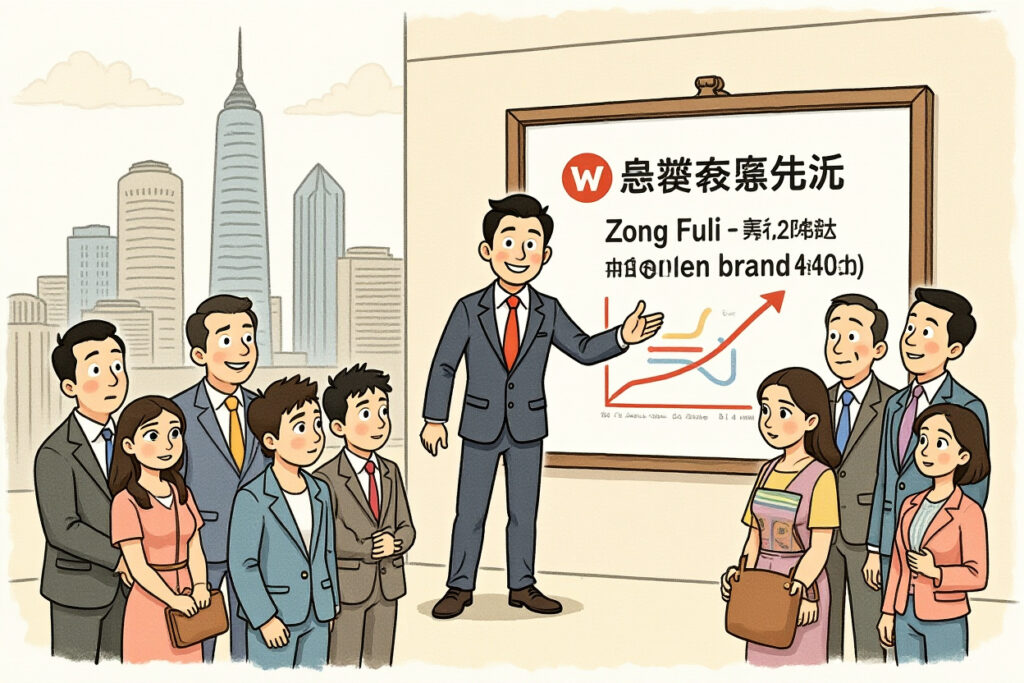Executive Summary
Key findings from our investigation into China’s agarwood market reveal:
– Widespread use of artificial processing techniques to simulate high-quality agarwood
– Price discrepancies up to 30 times between authentic and counterfeit products
– Regulatory gaps in certification processes enabling counterfeit market growth
– Significant investment risks for collectors and investors in luxury Chinese goods
The Illusion of Quality in Agarwood Markets
China’s luxury goods market faces a credibility crisis as investigation reveals sophisticated counterfeit operations within the agarwood (沉香) industry. Sophisticated investors and collectors increasingly encounter challenges distinguishing genuine investment-grade products from clever fakes in the counterfeit agarwood market.
The problem has reached critical levels in major trading hubs, particularly in Southeast China’s designated “Agarwood Hometown” regions. During evening markets, hundreds of merchants display products with seemingly identical characteristics to untrained eyes, creating a minefield for investors seeking authentic pieces.
Market Scale and Consumer Impact
Industry estimates suggest the counterfeit agarwood market represents approximately 30% of total agarwood transactions in primary trading zones. Price differentials tell a concerning story: while genuine wild Kynam (奇楠) agarwood commands prices ranging from thousands to hundreds of thousands of yuan per gram, counterfeit products sell for as little as 20 yuan per gram while masquerading as premium goods.
This counterfeit agarwood market deception affects both individual collectors and institutional investors who include rare woods in alternative investment portfolios. The problem has international ramifications as Chinese luxury goods gain global popularity among high-net-worth investors.
The Artificially Enhanced Product Pipeline
Manufacturers have developed sophisticated methods to simulate the appearance and characteristics of high-quality agarwood. The process typically begins with low-quality raw materials that undergo artificial enhancement to command premium prices.
Oil Infusion Techniques
At Wen’s Kynam Factory (温氏奇楠工厂), investigators observed multiple polishing machines and essential oil containers used in systematic product enhancement. Workers openly admitted adding Kynam essential oil during polishing to improve color uniformity and scent intensity of low-quality products.
The practice extends beyond surface treatment. At Dongjiangwan Agarwood Crafts Factory (东江湾沉香工艺品工厂), products undergo oil boiling and soaking processes before final polishing. These techniques fundamentally alter the natural properties of agarwood, artificially inflating both appearance and market value.
Grade Manipulation Strategies
Merchants exploit the market’s quality grading system which prioritizes oil content as the primary value indicator. By artificially increasing oil appearance through technological means, manufacturers can transform substandard products into supposedly premium “sinking-grade” (沉水级) merchandise.
Size and processing techniques further complicate valuation. Round beads command higher prices due to material waste during production, while irregularly shaped beads sell at discounts. This legitimate price variation creates cover for fraudulent actors to justify artificially enhanced products at premium price points.
The Rise of Technological Counterfeits
Beyond surface-level enhancements, investigators discovered more sophisticated counterfeiting operations producing what merchants discreetly term “technology goods” (科技货). These products represent the most concerning development in the counterfeit agarwood market.
Advanced Manufacturing Techniques
At Ling’s Bead Craft Factory (凌氏香珠工艺厂), investigators found systematic production of completely artificial products. Workers use “white wood” (白木) – the valueless, oil-free wooden part remaining after agarwood harvest – as base material for counterfeit products.
The manufacturing process involves shaping white wood into beads, then using high-pressure injection of artificial oil paste to simulate high-oil agarwood appearance. Manufacturers甚至可以根据需求添加香精定制香味 (can even add custom scents according to demand) and guarantee permanent fragrance retention – an impossibility with natural products.
Evasion Tactics and Distribution Channels
Merchants have developed elaborate systems to evade regulatory scrutiny. At Xiang Zhi Yuan Store (香之源门店), access requires elevator card access to a third-floor showroom hidden from casual inspection. Products sell through invitation-only channels with strict vetting of potential buyers.
Manufacturers compartmentalize operations across multiple locations to avoid complete shutdown during regulatory actions. This distributed approach allows rapid resumption of operations even when individual facilities face inspection or closure.
Regulatory Gaps and Certification Failures
The persistence and growth of the counterfeit agarwood market highlights significant weaknesses in regulatory oversight and certification processes. Despite existing standards, enforcement mechanisms prove insufficient to protect consumers and investors.
Inadequate Certification Standards
When investigators submitted artificially enhanced products to Guanzhu Town Dianbai Agarwood Testing Center (观珠镇电白沉香检测中心), technicians issued certification despite visible quality issues. Center staff acknowledged abnormal characteristics but explained that as long as products met four basic criteria of Hainan standards – no strange odor, clear structure, and basic appearance requirements – certification would proceed.
Most concerningly, artificial oil injection falls outside mandatory disclosure requirements. Certificates provide no indication of artificial enhancement, rendering them virtually useless for identifying counterfeit products in the agarwood market.
Inconsistent Assessment Protocols
Testing facilities employ dramatically different evaluation methodologies. At Zhongheng Agarwood Jewelry Testing Center (中衡沉香珠宝检测中心), technicians use visual inspection, tactile assessment, and scent evaluation to distinguish between agarwood types. Yet even these basic assessments yield inconsistent results across testing facilities.
The absence of standardized, technologically advanced testing protocols creates opportunities for counterfeit products to enter legitimate markets. Without reliable verification mechanisms, investors cannot confidently assess product authenticity or value.
Market Implications and Investment Risks
The proliferation of counterfeit products creates substantial risks for investors and collectors participating in the luxury goods market. Understanding these risks is essential for protecting investment portfolios.
Valuation Erosion
Widespread counterfeiting undermines market confidence and compresses valuation premiums for genuine high-quality products. As investors struggle to authenticate purchases, willingness to pay premium prices diminishes across the market.
The problem compounds through market contagion. Suspicions about product authenticity in one market segment frequently spill over into related segments, depressing valuations even for verified genuine products.
Reputational Damage
China’s growing luxury goods industry suffers reputational harm from counterfeiting scandals. International investors particularly sensitive to authenticity concerns may avoid Chinese luxury categories entirely, restricting market growth and development.
This counterfeit agarwood market scandal specifically damages the reputation of China’s traditional crafts and cultural products, potentially affecting broader categories beyond agarwood itself.
Protecting Investments in Luxury Goods
Sophisticated investors require strategies to navigate the challenging landscape of luxury goods investing. Several approaches can help mitigate risks associated with the counterfeit agarwood market.
Enhanced Due Diligence Protocols
Investors should implement multi-layered verification processes including independent laboratory testing, provenance verification, and expert consultation before significant purchases. Reliance on single-point verification, particularly seller-provided certification, proves increasingly inadequate.
Developing relationships with trusted dealers with established track records provides additional protection. While not foolproof, long-term relationships create accountability mechanisms absent in anonymous market transactions.
Technological Verification Solutions
Emerging technologies offer promising solutions for authenticity verification. Advanced spectral analysis, DNA marking, and blockchain-based provenance tracking systems provide increasingly accessible methods for verifying product authenticity.
Forward-thinking investors should prioritize partners adopting these technologies and support industry efforts to implement technological verification standards. The development of reliable, accessible verification technology represents the most promising solution to counterfeit market problems.
Navigating the Complex Agarwood Market
The investigation reveals systemic challenges within China’s luxury goods markets, particularly affecting the agarwood sector. While concerning, these findings provide investors with valuable intelligence for navigating market complexities.
Understanding the sophistication of counterfeiting operations enables more informed investment decisions and appropriate risk assessment. Investors should adjust valuation models to account for authentication risks and implement robust verification processes for all luxury goods acquisitions.
The market’s future development depends on addressing these challenges through improved regulation, advanced verification technology, and industry self-policing. Investors should support these efforts while maintaining appropriate skepticism toward too-good-to-be-true opportunities in the luxury goods space.




